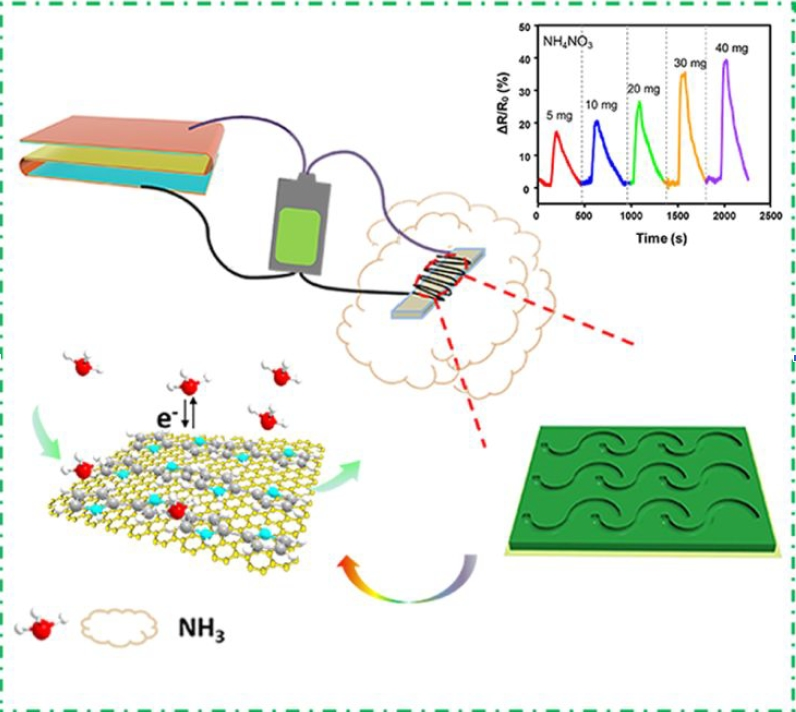J.M. Gao, J.Q. Qin, J.Y. Chang, H.Q. Liu, Z.-S. Wu,* and L. Feng*
ACS Applied Materials & Interfaces, 2020, 12, 34, 38674–38681.
DOI: 10.1021/acsami.0c10794 [PDF]

The rapid development of a NH3sensor puts forward a great challenge for active materials and integrated sensing systems. In this work, an ultrasensitive NH3sensor based on two-dimensional (2D) wormlike mesoporous polypyrrole/reduced graphene oxide (w-mPPy@rGO) heterostructures, synthesized by a universal soft template method is reported, revealing the structure–property coupling effect of the w-mPPy/rGO heterostructure for sensing performance improvement, and demonstrates great potential in the integration of a self-powered sensor system. Remarkably, the 2Dw-mPPy@rGOheterostructrure exhibits preferable response toward NH3(ΔR/R0= 45% for 10 ppm NH3with a detection limit of 41 ppb) than those of the spherical mesoporous hybrid (s-mPPy@rGO) and the nonporous hybrid (n-PPy@rGO) due to its large specific surface area (193 m2/g), which guarantees fast gas diffusion and transport of carriers. Moreover, thew-mPPy@rGOheterostructures display outstanding selectivity to common volatile organic compounds (VOCs), H2S, and CO, prominent antihumidity inteference superior to most existing chemosensors, superior reversibility and favorable repeatability, providing high potential for practicability. Thus, a self-powered sensor system composed of a nanogenerator, a lithium-ion battery, and aw-mPPy@rGO-basedsensor was fabricated to realize wireless, portable, cost-effective, and light-weight NH3monitoring. Impressively, our self-powered sensor system exhibits high response toward 5–40 mg NH4NO3, which is a common explosive to generate NH3via alkaline hydrolysis, rendering it a highly prospective technique in a NH3-based sensing field.